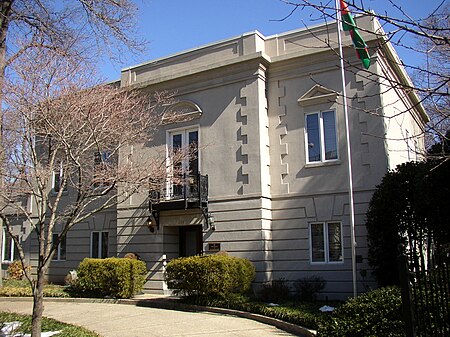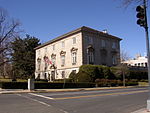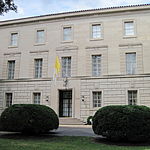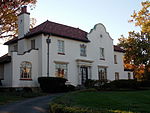Embassy of Azerbaijan, Washington, D.C.
1992 establishments in Washington, D.C.Azerbaijan politics stubsAzerbaijan–United States relationsBuildings and structures completed in 1949Diplomatic missions in Washington, D.C. ... and 2 more
Diplomatic missions of AzerbaijanWashington, D.C., building and structure stubs

The Embassy of Azerbaijan in Washington, D.C. is the diplomatic mission of the Republic of Azerbaijan to the United States. It is located on Embassy Row at 2741 34th Street, NW, NW Washington, DC. The embassy opened on March 6, 1992, after dissolution of Soviet Union in late December 1991. The United States opened U.S. Embassy in Baku, Azerbaijan on March 16, 1992.The chancery is housed in a 1949 building, with a current estimated value of $3,417,500 purchased by Azerbaijani government on March 22, 2000, for $1,595,000. The building is in the District of Columbia Public School District.
Excerpt from the Wikipedia article Embassy of Azerbaijan, Washington, D.C. (License: CC BY-SA 3.0, Authors, Images).Embassy of Azerbaijan, Washington, D.C.
34th Street Northwest, Washington
Geographical coordinates (GPS) Address External links Nearby Places Show on map
Geographical coordinates (GPS)
| Latitude | Longitude |
|---|---|
| N 38.9257 ° | E -77.0661 ° |
Address
34th Street Northwest 2741
20008 Washington
District of Columbia, United States
Open on Google Maps








